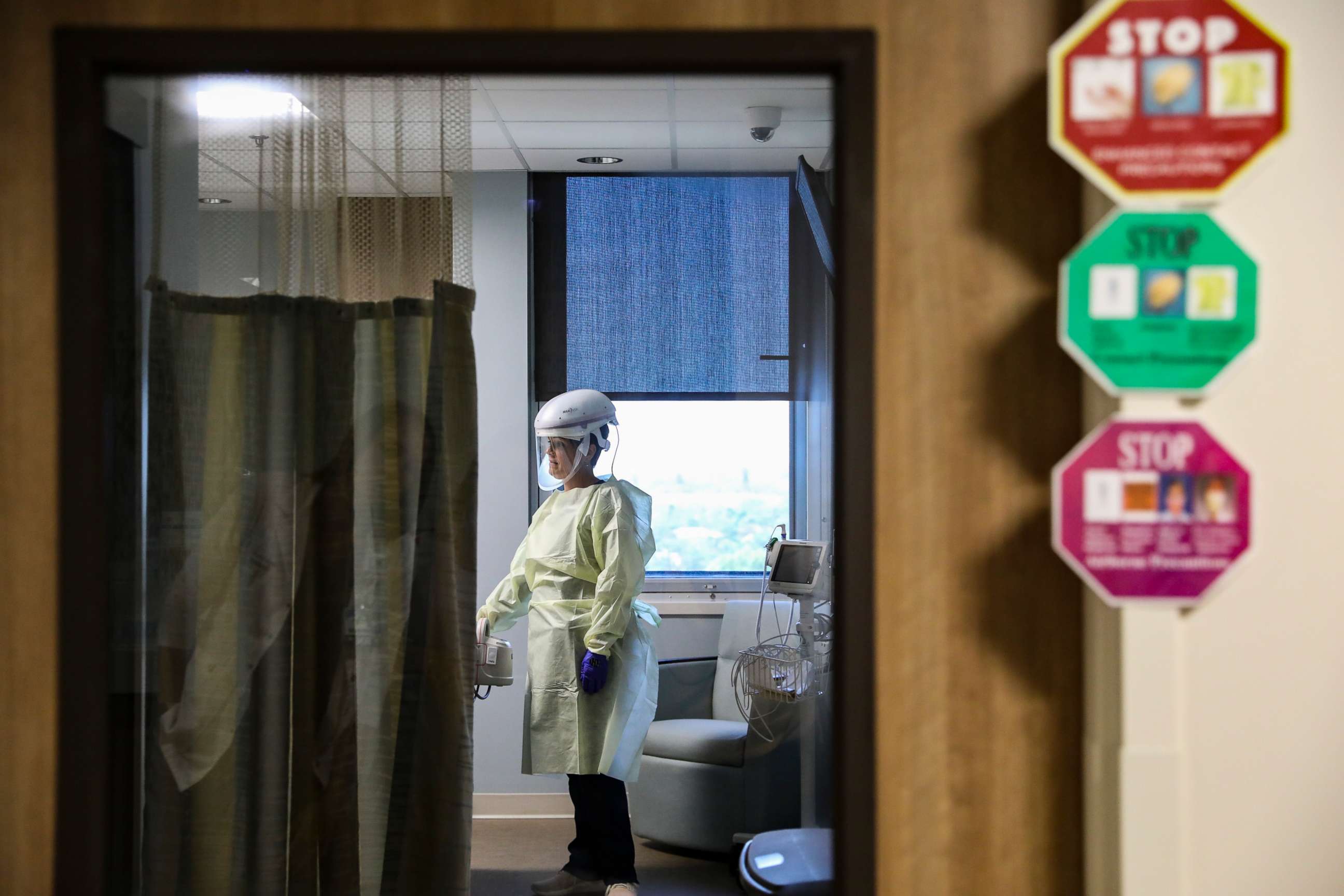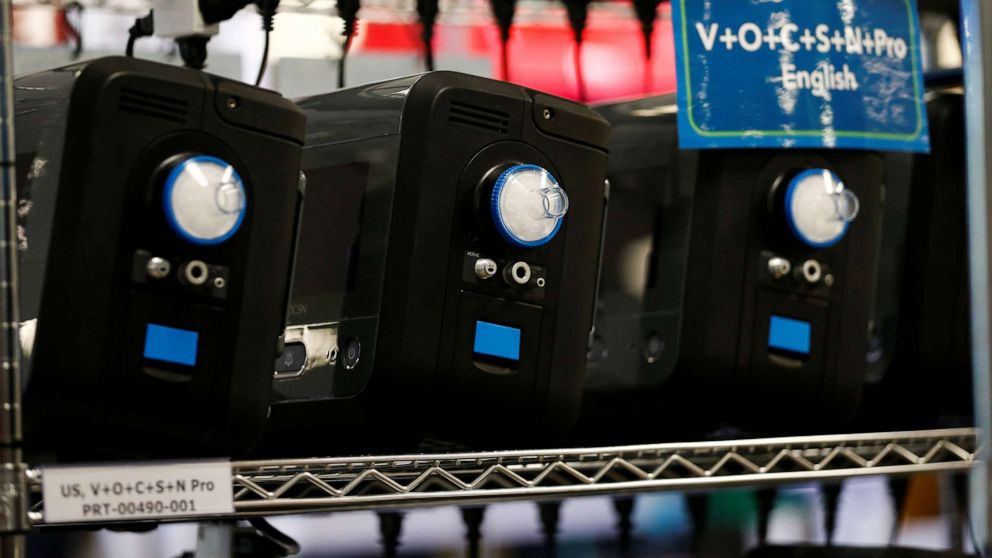Hospitals trying to figure out how they would ration ventilators as coronavirus cases rise in New York
Faced with more critically ill COVID-19 patients than equipment to treat them, New York hospitals are mapping out how they can ration care and equipment in order to save the greatest number of patients possible.
In the last two days, internal memos from a chairman of surgery at New York Presbyterian, one of the city’s largest hospital systems, raised alarms that the estimated crush of coronavirus patients within the next month would require 700 to 934 intensive-care beds, well beyond the current capacity.
The Queens branch of New York Presbyterian is actively putting together a committee to help make such critical-care determinations in an emergency, so individual doctors would know what to do at the moment it matters most. According to emails reviewed by ABC News, that hospital has already convened an “ethics committee” to address the “triage of ventilators." In layman’s terms, that is a process that dictates how medical staff would decide which patients are assigned ventilators in the event the number of patients needing those breathing machines surpasses the number available in the hospital.
Ethics committees are not new, though few hospitals have fully functioning panels. For those committees that are in place, the types of decisions now being contemplated are almost unheard of because the questions are so rare in developed countries like the US. The whole notion of making life-or-death decisions based solely on available medical equipment is a type of thinking more common to a combat zone than a big-city medical center in urban America.
Ventilators, also known as artificial breathing machines, are considered to be the most effective way to treat patients in respiratory failure from a critical case of COVID-19 because there is no known cure for the illness.
New York Gov. Andrew Cuomo has repeatedly said his state’s current number of 6,000 ventilators is inadequate to handle the surge of patients caused by the pandemic that is now sweeping through his state. Cuomo has said repeatedly New York will need for 30,000 more.
New York Presbyterian declined repeated requests for comment, first referring questions to the New York state Department of Health and then to the hospital trade group, the Greater New York Hospitals Association.
“The conversations are happening,” said Brian Conway, spokesman for the organization, which represents New York Presbyterian and other medical centers in New York City. “We are awaiting some kind of state guidance.”
The Health Department declined to comment. Two people briefed on the discussions told ABC News that officials are working to draft emergency protocols for hospitals, realizing that the disease is moving so quickly that it might only be days before emergency rooms are swamped. At the same time, large groups of hospitals are also consulting with medical ethicists to figure out how to set priorities that would allow them to make near-impossible choices between patients suffering the same disease but with dramatically different chances of survival, based on age, medical histories and underlying conditions.
According to those policies, patients likely to die would be given pain-control treatment so staff do not use vital equipment that would better be deployed to treat patients with stronger chances of survival.

Across the country, top health officials and hospital representatives in Washington state gathered on a call last week to discuss the same wrenching matter: when to invoke “crisis standards of care,” the a medical term for the rationing care and equipment.
Cassie Sauer, executive vice president of the Washington State Hospitals Association, told ABC News that details are still being decided, but basic factors to be included in their algorithm will be “age and underlying health conditions.” Sauer also said the policy would likely consider prioritizing the treatment of police, first responders and medical workers because saving their lives makes it more likely that others could be saved in the crisis.
"I understand it's scaring the public,” Sauer told ABC News. “The public should be scared. The public should be demanding action to keep this from happening."
Dr. Scott Halpern, professor of medical ethics and health policy at the University of Pennsylvania, has been working with leading bioethicists to prepare a policy that would be put in place at hospitals across the nation. That document is expected to be distributed early this week.
“Priority is assigned to those most likely to be saved, and most likely to live longer,” said Halpern.
The scenarios envisioned by people like Sauder and Halpern are familiar to very few practitioners in the U.S, health care system, according to Dr. Dan Hanfling, an emergency disaster responder and physician who wrote a medical paper widely considered the standard for crisis care in disaster.
Hanfling cited the 2010 Haiti earthquake as being one of the worst disasters and one that ethicists point to when considering the worst types of choices in medicine.
The most important thing, he said, is for health care systems to have plans in place before they are amid the chaos of a disaster.




